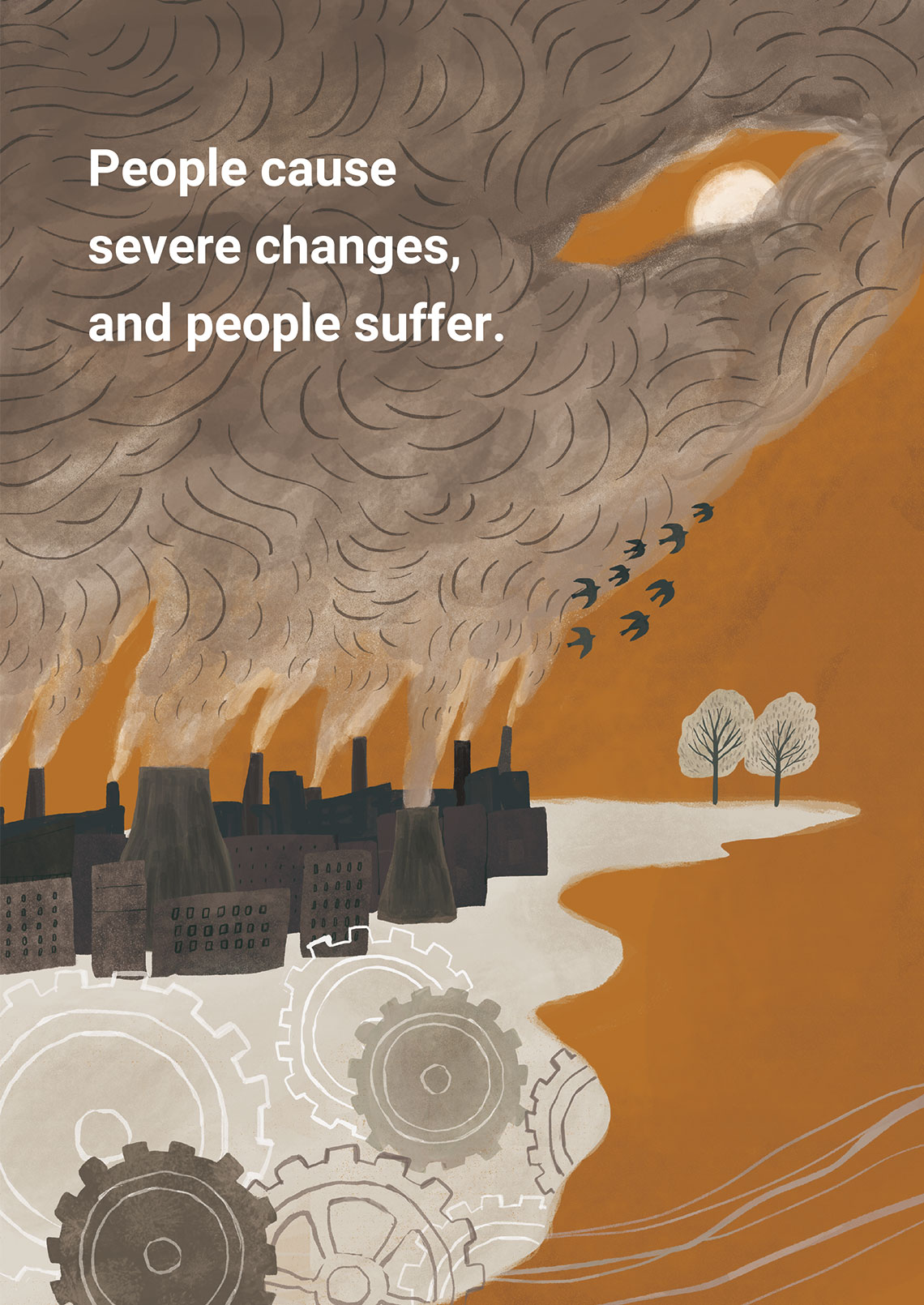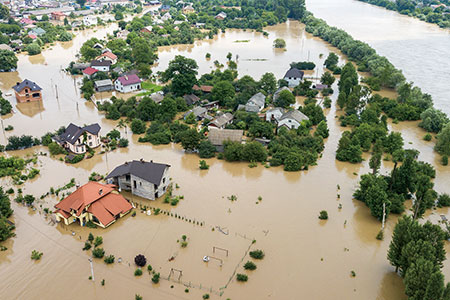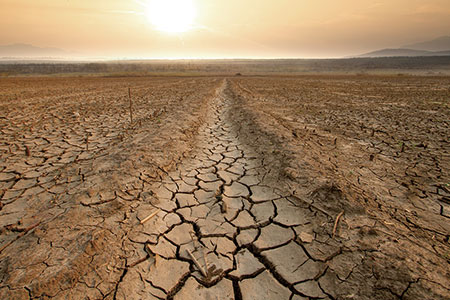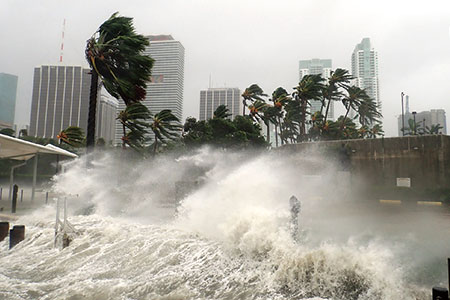02 People cause severe climate change

The Industrial Revolution caused unprecedented climate change, resulting in numerous damages.
Humanity has continued to make rapid progress by refining their ability to adapt to the environment. Yet, that progress has now reached a major dilemma. The Industrial Revolution in Europe from the late 18th to 19th century gave rise to mechanization and dramatic improvements in productivity. People's lives became unbelievably enriched in areas of clothing, food, and housing through market expansion, a booming economy, developments in transportation networks and medical technology, and other factors.
However, using fossil fuels, including coal and oil, as their source of power led to the emission of huge amounts of carbon dioxide into the atmosphere. The resulting greenhouse gases, a major component of which is carbon dioxide, trap heat in the atmosphere and accelerate global warming. This warming process led to changes in precipitation, the occurrence of extreme weather phenomena, and rising sea levels. Recently, various crises such as floods, heat waves, droughts, and storm surges have been inflicting massive damage on humans. The unprecedented climate change due to the rapid warming caused by humanity is now a critical issue for the entire planet.
Climate change caused
by warming
is now a major issue.

Flooding
In the 1970s, there were fewer than forty damaging floods per year for which international assistance was requested or that affected more than 100 people. This number has more than tripled to exceed 120 cases a year since 2000. (*1) In addition, flood damage could increase by several-fold if temperatures rise by 4 degrees C. (*2)

Heat waves
Between 20,000 and 30,000 people were estimated to have died from heat waves in Europe in 2003. (*3) Some estimates suggest that if there are no changes to current policies aimed at mitigating global warming, surface temperatures will rise 2.7 degrees C above pre-industrial levels by 2100, exposing more than 2 billion people to life-threateningly hot environments. (*4)

Droughts
From 1970 to 2019, it is estimated that drought-related disasters around the world have caused billions of dollars in economic losses. (*2) Some estimates suggest that if we fail to adopt climate measures while keeping fossil fuel-dependent development, a period of record-high drought frequency that lasts for 5 or more years will occur within the century in approximately 30% of the world. (*5)

Storm surges
Sea levels rose by a global average of about 0.2 meters between 1901 and 2018. (*6) By 2100, several low-lying island countries will be submerged and approximately one billion people will likely face storm surges and other climate risks specific to coastal regions in the medium term. (*2)
An unprecedented risk to humanity.
Measures to deal with climate change are now an important challenge and responsibility for every one of us.
What will happen to the Earth and humanity if global warming continues at its current pace? A failure to reduce carbon dioxide emissions will cause the concentration of greenhouse gases to rise and the average global temperature to be between 4.0 and 5.5 degrees C higher in 2100 than it is today. It is predicted that this will result in an expansion and increased frequency of flooding caused by torrential rains, droughts, heat waves, storm surges, and other extreme weather-related disasters that can affect the entire planet. Various disasters will occur worldwide, inflicting massive damage to our lives.
To continue living prosperously and serenely on Earth, we must take on this challenge and responsibility of implementing measures against climate change without delay.
If we continue on
this current path,
the Earth and humanity
will be at risk.
Worst-case scenarios due to global warming as predicted by climate system models
If greenhouse gases continue to be emitted at high levels, it is predicted that average temperatures will rise by at least 4 degrees C over pre-Industrial Revolution levels by 2100. (*6) In which case:

About half of all marine life
in the tropics will become extinct
If warming of more than 4 degrees C occurs, it is possible that about half of all tropical marine species will become extinct and that the principal forms of vegetation in ecosystems across 35 percent of the land surface around the globe will change. (*2)

Approximately four billion
people around the world
will suffer water shortages
Warming of 4 degrees C could cause around 4 billion people around the world to suffer from water shortages. (*2)

At least a quarter of the
world's population would
be at risk of dengue fever
If warming of more than 4 degrees C occurs, it is predicted that the vector range of dengue fever will grow across North America, Asia, Europe, and sub-Saharan Africa to put an additional 2.25 billion people at risk of contracting this disease. (*2)

